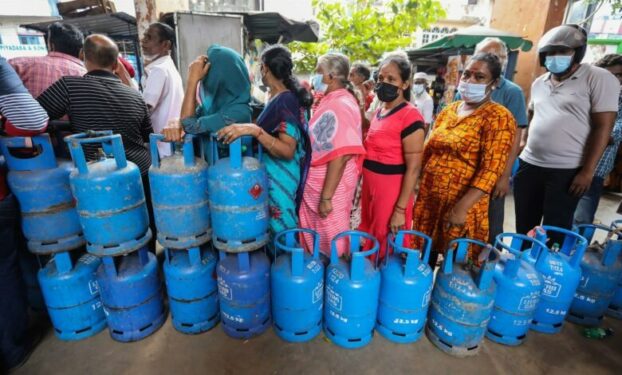Malaysia beware: Sri Lankan economic crisis inflicted by self-serving elite

ONCE deemed a basic human needs success story, Sri Lanka (SL) is now in its worst economic crisis since independence in 1948. Nonetheless, SL’s ‘moment of truth’ now offers lessons for other developing countries.
China scapegoat
SL has just defaulted on its foreign debt for the very first time. Attributing its current predicament to a Chinese ‘debt-trap’ is a new Cold War propaganda distraction – which we will undoubtedly hear much more of.
In this fable, SL is a country caught in a debt trap due to white elephant projects mooted and financed by borrowings from China. Blaming SL’s debt crisis on Chinese loans is not only factually wrong, but also prevents understanding the origins and nature of its current crisis.
Outstanding SL government foreign debt in April 2021 was US$35.1 bil. Policy errors have reduced foreign direct investment (FDI), exports and government revenue, changing the composition of its foreign debt for the worst.
Debt to the Asian Development Bank (ADB), World Bank, China, Japan and other bilateral lenders, including India, came to about a tenth each. Borrowing from capital markets – 47% or almost half – is mainly responsible for its debt unsustainability.
After all, borrowing from multilateral development banks – mainly the World Bank and ADB – and bilateral lenders are mostly on concessional terms while debt from commercial sources incurs higher interest rates.
Commercial loans tend to be more short term and subject to stricter conditions. As sovereign bonds or commercial loans become due, their full value must be repaid. External debt servicing costs surge accordingly.
As of April 2021, about 60% of SL’s debt was for durations of less than 10 years. The US dollar denominated debt share rose sharply – from 36% in 2012 to 65% in 2019 as Chinese renminbi denominated loans remained around 2%.
Adding government guaranteed debt to state-owned enterprises, total borrowings from China were 17.2% of SL’s total public foreign debt liabilities in 2019. Meanwhile, commercial borrowings grew rapidly from merely 2.5% of foreign debt in 2004 to 56.8% in 2019.
The effective interest rate on commercial loans in January 2022 was 6.6% – more than double that for Chinese debt. Unsurprisingly, SL’s interest payments alone came to 95.4% of its declining government revenue in 2021!
Deep-rooted problems
Following its 2001 recession, SL recovered before growth declined again after 2012 and the pandemic contraction in 2020. SL also experienced premature deindustrialisation with manufacturing’s gross domestic product (GDP) share falling from 22% in 1977 to 15% in 2017.
Government tax revenue declined from 18.4% of GDP (1990-1992 average) to 12.7% (2017-2019) and a 8.4% pandemic nadir in 2020. Non-tax revenue – mainly dividends and profits from public investments – fell from 2.3% of GDP in 2000 to 0.9% in 2015.
SL’s exports-GDP ratio almost halved from 39% in 2000 to 20% in 2010. This took a big hit during the pandemic, dropping to 17% in 2020. From 2000, FDI inflows into SL were between 1.1% and 1.8% of GDP before falling to 0.5% in 2020.
During 2012-2019, the share of International Monetary Fund (IMF) Special Drawing Rights (SDRs) in SL’s debt stock fell from 28% to 14% as borrowings ballooned! SL’s debt crisis is clearly due to the policy choices of successive governments since the 1990s.


